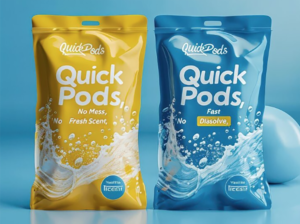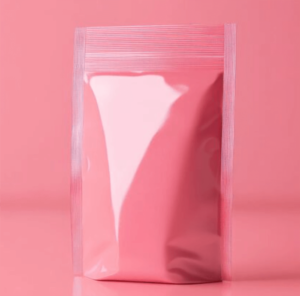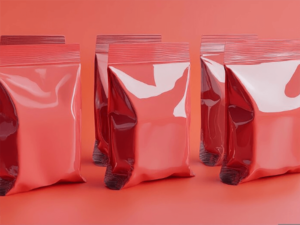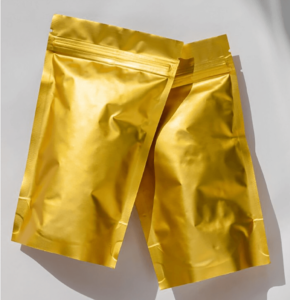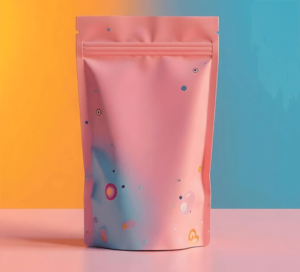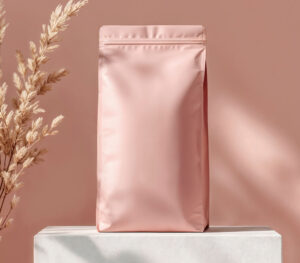The juice pouch has long been a symbol of convenience, particularly for on-the-go consumption. Its lightweight, unbreakable nature revolutionized how beverages are packaged and enjoyed. However, as global environmental awareness intensifies, the evolution of the juice pouch is shifting dramatically. The next generation of juice pouches is not merely about portability; it’s about a sophisticated balance between user-friendly design, uncompromised product quality, and critical environmental responsibility. This transformation demands innovation across materials, manufacturing, and design, ensuring that convenience no longer comes at the expense of ecological impact.
Color Psychology in Juice Pouch Design: Influencing Consumer Perception and Purchase Decisions
Color is arguably the most powerful non-verbal communicator in packaging design, especially for products like juice where naturalness and flavor are key. The strategic use of color can profoundly influence a consumer’s perception of a juice pouch and directly impact their purchasing decisions.
- Evoking Freshness and Naturalness: Vibrant greens and yellows often convey freshness, health, and natural ingredients, appealing to health-conscious consumers. Blues can suggest coolness and purity, ideal for water-infused or lighter juice blends.
- Highlighting Flavor Profiles: Red hues are universally associated with berries and sweet flavors, while oranges and deep purples effectively communicate citrus and dark fruit varieties. A skillful designer uses these associations to instantly signal the juice’s flavor profile.
- Targeting Demographics: Bright, playful colors with high contrast are often used for children’s juice pouches, capturing their attention and creating a sense of fun. More sophisticated, muted tones or metallic accents might target adult consumers seeking premium or functional beverages.
- Emotional Connection: Warm colors (red, orange, yellow) can evoke feelings of energy and happiness, while cool colors (blue, green, purple) might suggest calm or refreshment. Brands leverage these emotional responses to align with their desired consumer experience.
- Brand Differentiation: A unique and memorable color palette can help a juice pouch stand out in a crowded retail environment. When combined with distinctive graphics and typography, color becomes a cornerstone of brand recognition.
Understanding and strategically applying color psychology allows designers to create juice pouches that are not only visually appealing but also intuitively communicate product attributes and influence consumer choice effectively.

Temperature-Resistant Juice Pouches: Solutions for Hot-Fill and Cold Chain Applications
Juice products often require stringent temperature management, necessitating pouches that can withstand both extreme heat during processing and consistent cold throughout the supply chain. This demands advanced material science and engineering in pouch construction.
- Hot-Fill Applications: Many juices are “hot-filled” to ensure microbial safety. This process involves filling the pouch with juice at temperatures typically between 85°C and 95°C (185°F to 203°F). Pouches for hot-fill must be constructed with inner layers (sealant layers) that can withstand these temperatures without delaminating, deforming, or leaching chemicals. High-performance polypropylene (PP) or specialized polyethylene (PE) formulations are often used for these inner layers, sometimes combined with outer layers of PET or nylon for structural integrity. The design also accounts for vacuum formation upon cooling, ensuring package integrity.
- Cold Chain Stability: Once filled, juices require consistent refrigeration or freezing for extended preservation. Pouches must maintain their integrity at low temperatures, resisting brittleness or cracking. Barrier layers (e.g., EVOH, foil, or advanced coatings) are critical to prevent oxygen ingress and moisture loss during prolonged cold storage, which could lead to flavor degradation or freezer burn for frozen concentrates.
- Thermal Shock Resistance: The ability of the pouch to withstand rapid temperature changes, such as moving from a hot-fill line to a cooling tunnel, or from a refrigerated truck to a warm shelf, is paramount. Laminates are engineered to prevent delamination or stress cracking under these conditions.
Advanced material selection and precise lamination techniques ensure that juice pouches provide reliable protection across the entire temperature spectrum of the supply chain, from processing to final consumption.
Competitive Analysis: Leading Juice Pouch Manufacturers and Their Market Strategies
The juice pouch manufacturing sector is highly dynamic, characterized by intense competition and continuous innovation. Leading manufacturers differentiate themselves through a combination of technological prowess, sustainability initiatives, and customer-centric strategies.
- Technological Leadership: Top manufacturers invest heavily in R&D to develop next-generation barrier films, advanced sealing technologies, and high-speed production machinery. They are pioneers in creating mono-material solutions, transparent high-barrier films (e.g., SiOx/AlOx coatings), and specialized fitments (spouts, caps) that enhance convenience and sustainability.
- Sustainability Focus: A key differentiator is the commitment to environmental responsibility. Manufacturers are actively promoting and developing recyclable, compostable, or bio-based pouch materials. They often collaborate with brand owners to establish recycling programs or closed-loop systems for their packaging.
- Global Reach and Local Presence: Leading players often have extensive manufacturing capabilities and distribution networks, allowing them to serve diverse markets while also understanding and adapting to regional regulatory nuances and consumer preferences.
- Customization and Design Capabilities: Offering extensive customization options, from pouch size and shape (shaped pouches) to high-definition printing and unique closure systems, allows brands to create distinctive products. Manufacturers often have in-house design and engineering teams to support brand development.
- Integrated Solutions: Some manufacturers provide not just pouches but also filling and sealing equipment, offering a complete, integrated packaging solution to their clients, which simplifies operations for beverage companies.
Manufacturers are strategically positioning themselves as partners in brand success, not just suppliers, by prioritizing innovation, sustainability, and comprehensive client support.

Automation Solutions for Small to Medium Scale Juice Pouch Production
While large beverage corporations benefit from massive, fully automated lines, small to medium-sized juice producers require flexible and cost-effective automation solutions that can scale with their growth without sacrificing quality.
- Semi-Automatic Filling and Sealing Machines: These machines are ideal for starting out. Operators manually load pre-formed pouches (e.g., stand-up pouches or spout pouches), and the machine automates precise filling and sealing. This significantly improves consistency and speed over purely manual processes.
- Compact Form-Fill-Seal (FFS) Units: Smaller, more modular FFS machines are available that can produce pouches directly from rollstock, offering greater efficiency for medium-scale operations. These units are designed for faster changeovers between different pouch sizes or designs.
- Integrated Dosing and Capping: Automation can extend to precise liquid dosing systems and automatic capping machines for spout pouches, ensuring accurate fill volumes and secure closures without extensive manual labor.
- Robotic Pick-and-Place: For more complex tasks like arranging pouches into secondary packaging or palletizing, collaborative robots (cobots) can be integrated, offering flexibility and precision without requiring large capital investments or extensive safety guarding.
- Scalable Solutions: The best automation solutions are those that allow for future expansion. This means investing in machinery that can accommodate increased throughput by adding modules or running at higher speeds as production demands grow.
These automation solutions empower smaller producers to compete effectively, maintain consistent quality, and expand their market reach for premium juice products.
Migration Testing and Food Contact Material Requirements for Juice Pouch Manufacturers
Ensuring the safety of food contact materials (FCMs) is paramount for juice pouch manufacturers. Compliance with rigorous regulatory standards prevents chemical migration from packaging into the juice, safeguarding consumer health and product integrity.
- Regulatory Frameworks: Major regulatory bodies globally (e.g., those governing broad economic regions or specific territories) maintain stringent frameworks for FCMs. These typically include “positive lists” of approved substances that are permitted for use, and “negative lists” of prohibited substances.
- Migration Testing: This is a crucial aspect of compliance. Packaging materials are subjected to simulated conditions (temperature, time, food simulants representing different food types) to measure the potential transfer of chemical substances from the packaging into the food. These tests ensure that migration levels remain below specified limits (Specific Migration Limits – SMLs).
- Good Manufacturing Practices (GMP): Manufacturers of FCMs must adhere to GMP guidelines, ensuring that materials are produced under hygienic conditions, with robust quality control measures to prevent contamination and ensure consistency.
- Traceability: Full traceability of raw materials and manufacturing processes is often required, allowing for rapid identification and recall if a safety issue arises.
- Juice-Specific Considerations: Juice, with its acidic nature and sometimes high sugar content, can be more challenging than other food types. Packaging materials must be specifically tested for compatibility to prevent scalping of desirable aromas, off-flavors from chemical interaction, or corrosion of barrier layers over time.
Meeting these comprehensive requirements is non-negotiable for manufacturers to gain market access and build consumer trust in their juice pouch products.

Working with Designers and Manufacturers: Effective Collaboration for Custom Juice Pouches
Creating a truly effective and distinctive custom juice pouch requires seamless collaboration between brand owners, packaging designers, and manufacturers. Each party brings unique expertise that, when combined, leads to optimal outcomes.
- Early Engagement: Involving manufacturers early in the design process is critical. They can provide valuable insights into material feasibility, print limitations, cost implications, and manufacturing efficiencies for complex designs (e.g., shaped pouches or specific spout pouch designs).
- Clear Communication of Needs: Brand owners must clearly articulate their product’s preservation needs (shelf life, barrier requirements), target consumer, brand aesthetic, and budget.
- Iterative Design Process: The design process should be iterative, involving mock-ups, prototypes, and testing. Designers translate brand vision into visual concepts, while manufacturers provide technical feedback on how designs can be realized efficiently and effectively on production lines.
- Material Selection Expertise: Manufacturers can guide the selection of appropriate films, barrier layers, and closure systems based on product requirements, regulatory compliance, and sustainability goals.
- Print and Graphics Collaboration: Working closely on print specifications (e.g., color matching, graphic resolution) ensures that the final printed pouch accurately reflects the designer’s vision and brand standards.
- Quality Control Agreement: Establishing clear quality control parameters and acceptance criteria ensures that the final produced pouches meet agreed-upon standards.
Effective collaboration bridges the gap between creative vision and manufacturing reality, resulting in custom juice pouches that are both visually stunning and functionally superior.
Secondary Packaging for Juice Pouches: Shelf Appeal and Transportation Efficiency
While the primary juice pouch holds the product, secondary packaging plays a crucial dual role: enhancing shelf appeal in retail environments and ensuring efficient and safe transportation.
- Retail Presentation: Secondary packaging, such as multi-packs, display cartons, or vibrant sleeves, can significantly boost a juice pouch’s visibility and appeal on store shelves. It allows for larger branding statements and provides space for additional product information or promotions.
- Structural Support: Flexible pouches, while convenient, require external support for stacking and display. Cartons or trays provide this stability, preventing crushing or damage.
- Transportation Efficiency: Well-designed secondary packaging optimizes space utilization in shipping containers and pallets, reducing shipping costs and environmental impact per unit. Robust corrugated cartons protect pouches from impact and vibration during transit.
- Brand Extension: The secondary packaging offers another opportunity for brand storytelling, engaging consumers before they even open the primary pouch. This can include recipes, games for children, or sustainability messages.
- Ease of Handling: Secondary packaging often includes features like easy-open perforations or carry handles for consumer convenience, as well as features for efficient handling by retailers (e.g., ready-to-display trays).
Optimizing secondary packaging ensures that juice pouches arrive at their destination intact and are presented attractively, contributing to both operational efficiency and consumer appeal.
Child-Friendly Yet Secure: Advanced Closure Technologies for Kids’ Juice Pouches
Designing closures for children’s juice pouches presents a unique challenge: they must be easy for small hands to open, yet secure enough to prevent spills and accidental openings, and robust enough to withstand being dropped or squeezed.
- Spout Pouches: These are the dominant format for kids’ juice pouches. The integrated spout with a reclosable cap offers convenience and prevents spillage.
- Anti-Choking Caps: A critical safety feature, caps for children’s pouches are often designed with a larger diameter and/or venting holes to prevent them from becoming choking hazards if accidentally swallowed. These comply with specific safety standards for children’s products.
- Tamper-Evident Features: Caps or seals often incorporate tamper-evident rings or seals that break upon first opening, assuring parents of product safety and integrity.
- Ergonomic Design: The cap’s shape and texture are designed for easy gripping and twisting by small hands, while still providing a secure seal when closed.
- Leak-Proof Design: The spout and cap mechanism must be inherently leak-proof, even when subjected to pressure (e.g., from a child squeezing the pouch). This often involves specialized valve designs within the spout.
- Resealability: The ability to reseal the pouch after partial consumption is a key convenience factor for parents, minimizing waste and mess.
Advanced closure technologies continuously evolve to balance these competing demands, ensuring that children’s juice pouches are both safe and delightfully easy for kids to enjoy.
The next generation of juice pouches is a testament to the packaging industry’s commitment to continuous innovation. By integrating advancements in material science, thoughtful design, efficient manufacturing, and robust safety features, these pouches are setting new benchmarks for convenience, product preservation, and environmental responsibility, fulfilling the evolving demands of today’s consumers and the planet.

